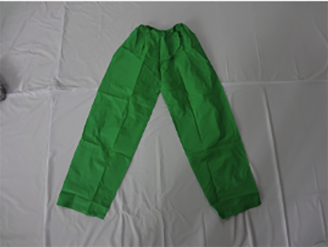डिस . 15, 2024 09:38 Back to list
peva poncho factory
The Growing Popularity of PEVA Ponchos A Look into the Factory Process
In recent years, the demand for eco-friendly and functional outdoor gear has surged, particularly with the increasing awareness of environmental issues and the need for sustainable fashion. Among those products, PEVA (Polyethylene Vinyl Acetate) ponchos have emerged as a favorite for both consumers and manufacturers alike. This article takes a closer look at the factory processes involved in creating PEVA ponchos and why they are becoming a popular choice for outdoor enthusiasts.
The Appeal of PEVA Material
Before diving into the manufacturing process, it's essential to understand why PEVA is favored over other materials. PEVA is a non-toxic alternative to PVC (Polyvinyl Chloride), which has been criticized for its environmental impact. Unlike PVC, PEVA is free from harmful chemicals like phthalates and chlorine, making it a safer choice for both the environment and human health. This quality has made PEVA ponchos popular not only for their practical use during wet weather but also as a responsible fashion item.
The Manufacturing Process
The production of PEVA ponchos involves several key stages, from raw material sourcing to the final product
. Here’s a detailed breakdown of the factory process1. Sourcing Raw Materials The first step in manufacturing PEVA ponchos is sourcing high-quality PEVA resin. Manufacturers usually partner with reputable suppliers who provide eco-friendly materials, ensuring that the end product meets sustainability standards.
2. Extrusion Once the raw materials are obtained, the PEVA resin is fed into an extruder. The extrusion process involves melting the resin and forcing it through a die to create a thin, flexible sheet of PEVA. This sheet can then be rolled up for convenient handling.
3. Cutting and Shaping After the PEVA sheet is created, it is cut into appropriate sizes and shapes. The design usually varies according to the intended use—some ponchos feature hoods, while others are designed for quick wear and easy packing. Automated cutting machines are commonly used to ensure precision and reduce waste.
4. Sewing and Assembly The cut pieces of PEVA are then sewn together using high-quality thread that can withstand environmental elements. Some manufacturers utilize ultrasonic welding techniques for a seamless finish, which enhances the poncho's waterproof capabilities. This stage is crucial as it determines the durability and functionality of the final product.
peva poncho factory

5. Quality Control Quality assurance is a fundamental part of the manufacturing process. Each poncho undergoes thorough inspection to ensure it meets predefined standards. Factors such as waterproofing, stitching integrity, and overall appearance are evaluated.
6. Packaging Once the ponchos pass quality checks, they are folded, packaged, and labeled. Many factories prioritize eco-friendly packaging solutions, reflecting their commitment to sustainability in every aspect of production.
7. Distribution After packaging, the finalized products are sent to various distribution channels. Retailers, e-commerce platforms, and outdoor supply stores are common avenues for getting these ponchos into the hands of consumers.
The Market Demand
The rise in outdoor activities, coupled with unpredictable weather conditions, has led to increased demand for versatile and lightweight rain gear. PEVA ponchos cater to this need, providing excellent coverage while remaining compact and easy to carry. Their stylish designs and variety of colors also appeal to fashion-conscious consumers looking for functional yet trendy outdoor apparel.
Environmental Impact
Manufacturers of PEVA ponchos are increasingly focused on reducing their carbon footprint and embracing circular economy principles. Many are seeking innovative ways to recycle and repurpose materials. This not only appeals to environmentally conscious customers but also contributes positively to the ecosystem.
Conclusion
The factory process behind PEVA ponchos exemplifies how sustainable materials can merge with modern manufacturing techniques to produce practical, stylish, and eco-friendly products. As consumers become more aware of their purchasing choices and demand for responsible manufacturing grows, PEVA ponchos stand out as a beacon of innovation in the apparel industry. This burgeoning market is likely to expand as technology advances and more consumers prioritize sustainability in their outdoor gear choices.
-
White PEVA PVC Pet Body Bag with Handle | Durable Portable
NewsAug.05,2025
-
White PEVA PVC Pet Body Bag w/Handle - Eco-Safe & Durable
NewsAug.04,2025
-
Sleeveless Kid Apron - Waterproof & Comfy Design | GPT-4 Turbo
NewsAug.03,2025
-
PVC/PEVA Waterproof Rainwear - Lightweight Protection
NewsAug.02,2025
-
Premium Post Mortem Bags with AI Tech | 55 chars
NewsAug.01,2025
-
Premium Post Mortem Bags: Secure & Leak-Proof Body Storage
NewsJul.31,2025





